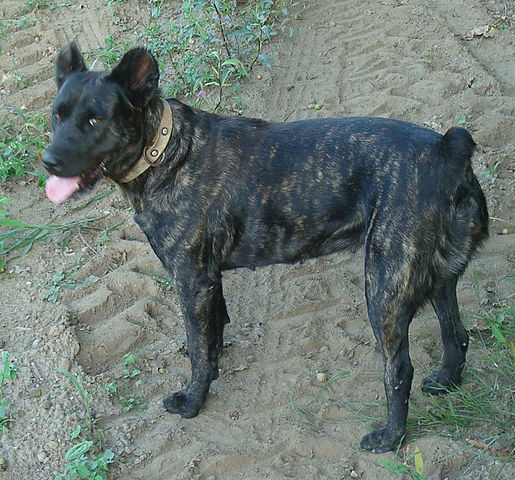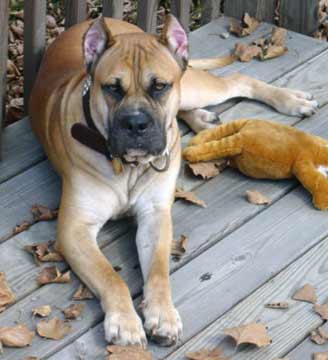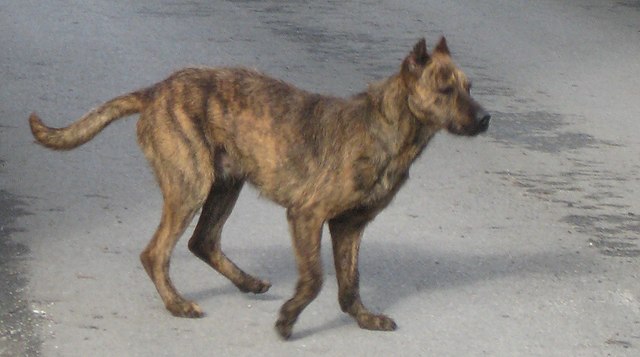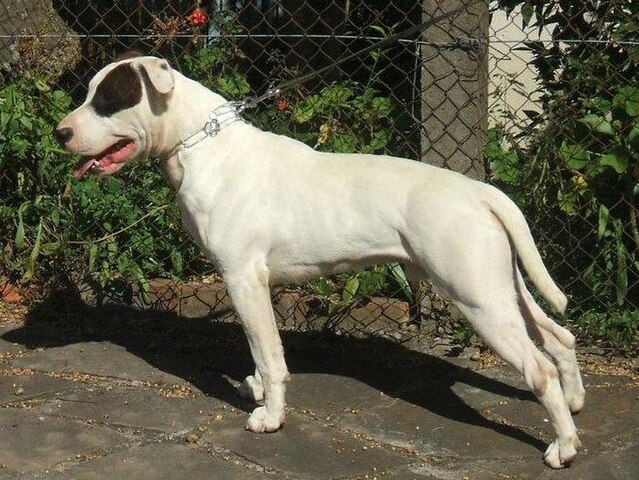The Saint Miguel Cattle Dog (also known as the Azores Cattle Dog or as the Cao de Fila de Sao Miguel) is a molosser-type breed from Portugal. They were used as catch dogs and herding dogs since the time they were created in the late 1800’s, and were built sturdily enough to live outdoors while doing these important jobs. Although they’ve been around for a long time, it wasn’t until 1984 that the first standard was actually drawn up. Later, they were recognized by the FCI internationally although to this day are a fairly rare breed. Nowadays, they are frequently used in personal protection and other guard duties. Temperament can vary from one individual to the next – with some fairly docile and gentle, and others tending to be quite dominant. Most tend to form strong bonds with their owners and they make great pets for those who can meet their requirements.
Intelligent and obedient when training is started young, members of the Miguel breed can participate successfully in many dog sports! Formal obedience, tracking, agility, flyball and herding are some of the activities that they can excel in. That said, because many can be dominant, they should only be owned by experienced dog people that are ready to provide strict rules and management! Training should incorporate “basic house rules” but can also branch out into more specialized areas as well. This assertive breed needs a job to do and specialized training can fulfill that need. Not only can herding (for example) be fun, but it will also give this dog a purpose and a mental outlet!
The Saint Miguel is a medium sized breed with a robust build and a distinctive rolling movement in the rear. The tail is traditionally docked short and the ears are often cropped into a unique rounded shape. The head is square and broad. The color pattern is always brindle, with the base color ranging from shades of fawn to gray. The coat is smooth yet dense with a harsh texture, and only sheds moderately as long as the coat is brushed weekly. The short yet functional coat allows this hardy molosser breed to thrive in any climate.
Miguel Cattle Dogs are quite territorial and can be sharp towards strangers who encroach upon their property. It is vital that they be socialized while young so that they don’t become a liability! Well-socialized dogs still make excellent watch and guard dogs, but will be more predictable in general. With friends and family, however, the breed is friendly. Apartment-dwellers should steer clear of this breed as the frequent comings and goings of neighbors is likely to make them agitated. 
The Saint Miguel Cattle Dog is fairly energetic and needs at least one long walk every day to stay healthy and happy. As this breed’s lifespan averages 12-15 years, this is a commitment not to take lightly! Miguels that are well cared for are not known for any particular health problems, and they tend to stay strong and hardy well into old age. They are also not prone to getting sick easily as long as the dog is given regular vet care.
Miguels are generally good with children and enjoy extended play sessions! This said, their exuberance and “zest for life” shows in their play style and may be a bit too much for younger kids. Older children are a better match! This happy attitude doesn’t always extend to other animals however, and they are particularly likely to chase after small pets such as cats. Other dogs may be equally off-limits as well, as many members of this breed don’t get along with other canines.
The ideal home for a Saint Miguel is one with an experienced and fit adult, or a family with older children. Elderly people may have a harder time handling this breed, as will the meek or inexperienced. With a single individual, a work-at-home owner is best, as this breed doesn’t do well when left alone for long periods of time. However accommodations can be made for other situations as long as he isn’t left alone for extended periods on a regular basis. When matched to someone with an ideal lifestyle to him, he will likely become an extremely devoted dog, relishing in any attention given to him and returning it tenfold.



